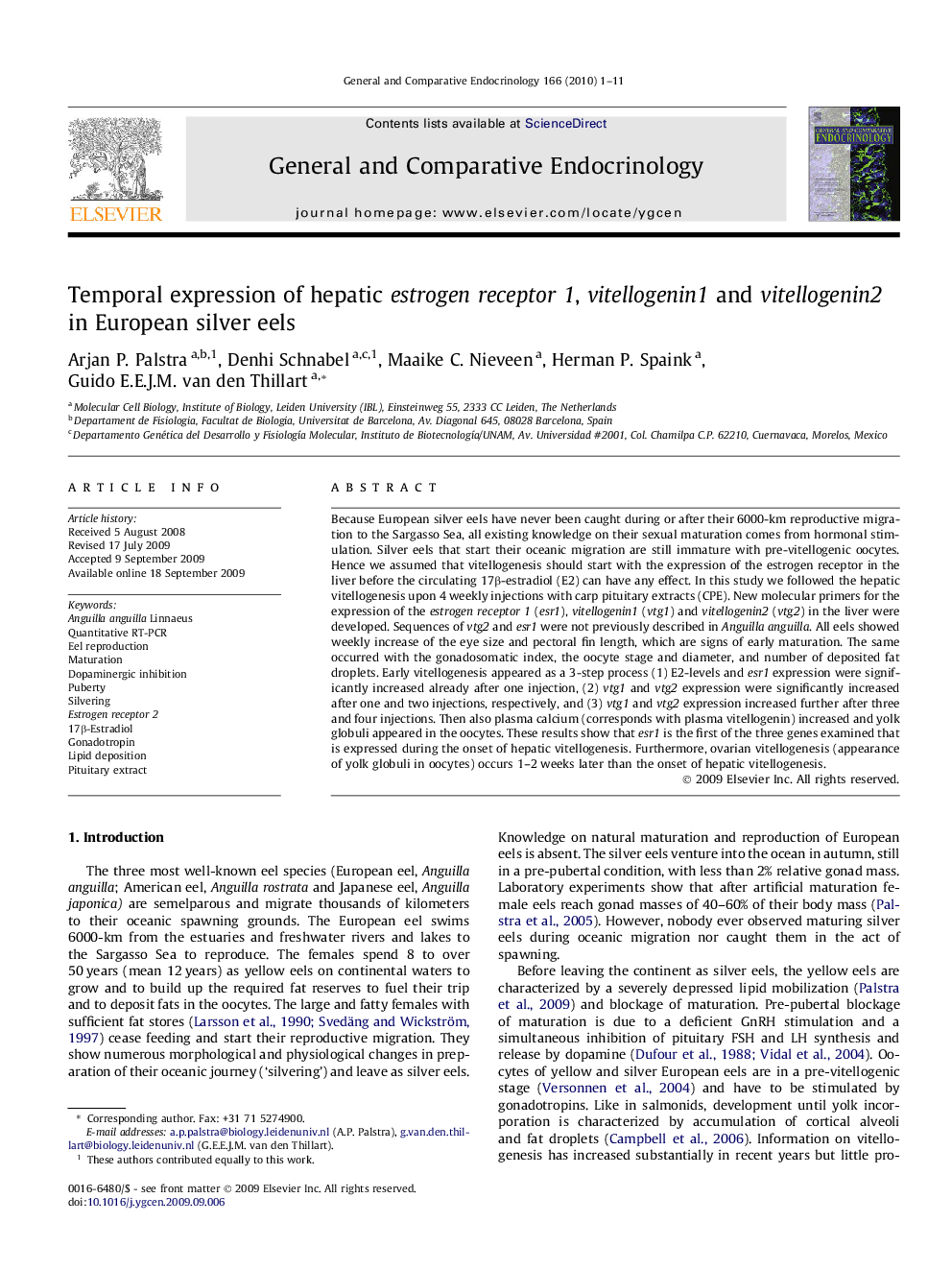| Article ID | Journal | Published Year | Pages | File Type |
|---|---|---|---|---|
| 2801358 | General and Comparative Endocrinology | 2010 | 11 Pages |
Because European silver eels have never been caught during or after their 6000-km reproductive migration to the Sargasso Sea, all existing knowledge on their sexual maturation comes from hormonal stimulation. Silver eels that start their oceanic migration are still immature with pre-vitellogenic oocytes. Hence we assumed that vitellogenesis should start with the expression of the estrogen receptor in the liver before the circulating 17β-estradiol (E2) can have any effect. In this study we followed the hepatic vitellogenesis upon 4 weekly injections with carp pituitary extracts (CPE). New molecular primers for the expression of the estrogen receptor 1 (esr1), vitellogenin1 (vtg1) and vitellogenin2 (vtg2) in the liver were developed. Sequences of vtg2 and esr1 were not previously described in Anguilla anguilla. All eels showed weekly increase of the eye size and pectoral fin length, which are signs of early maturation. The same occurred with the gonadosomatic index, the oocyte stage and diameter, and number of deposited fat droplets. Early vitellogenesis appeared as a 3-step process (1) E2-levels and esr1 expression were significantly increased already after one injection, (2) vtg1 and vtg2 expression were significantly increased after one and two injections, respectively, and (3) vtg1 and vtg2 expression increased further after three and four injections. Then also plasma calcium (corresponds with plasma vitellogenin) increased and yolk globuli appeared in the oocytes. These results show that esr1 is the first of the three genes examined that is expressed during the onset of hepatic vitellogenesis. Furthermore, ovarian vitellogenesis (appearance of yolk globuli in oocytes) occurs 1–2 weeks later than the onset of hepatic vitellogenesis.
